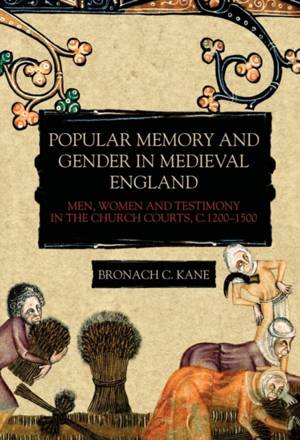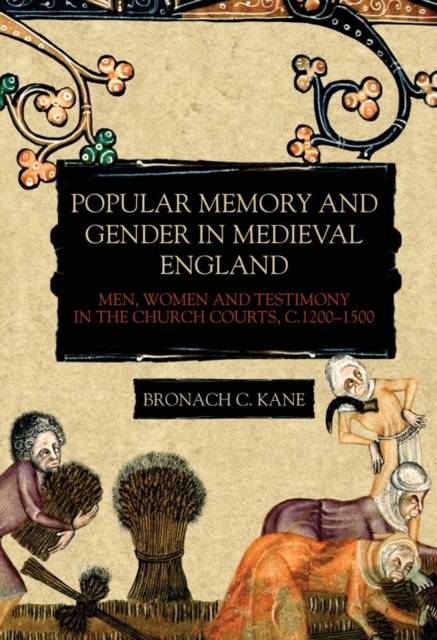
- Afhalen na 1 uur in een winkel met voorraad
- Gratis thuislevering in België vanaf € 30
- Ruim aanbod met 7 miljoen producten
- Afhalen na 1 uur in een winkel met voorraad
- Gratis thuislevering in België vanaf € 30
- Ruim aanbod met 7 miljoen producten
Zoeken
Popular Memory and Gender in Medieval England
Men, Women, and Testimony in the Church Courts, C.1200-1500
Bronach Kane
€ 62,95
+ 125 punten
Uitvoering
Omschrijving
WINNER of the Women's History Network 2020 Book Prize
Church court records offer the most detailed records of everyday life in medieval England for people below the level of the elite. Vivid testimony in cases of marriage, insult, and debt, as well as tithes, testaments and ecclesiastical rights, show how men and women thought about the past and presented their own histories.
While previous studies of memory in this period have tended to explore formal memory techniques in the schools and monasteries, this book turns to lay contexts instead, considering for the first time how gender influenced the ways that "ordinary" men and women remembered past events in the centuries leading up to the Reformations. Drawing on legal depositions, supplemented by pastoralia, literature and lyrics, the author argues that despite the many constraints upon their actions, lower-status men and women could use the law to communicate complex and varied pasts. She addresses the legal and religious developments that generated these memories, charting how gender shaped depictions of courtship, sexuality and childbirth, marriage and widowhood, as well as custom and the landscape. The book analyses these themes through the lens of gender and subjectivity, challenging conventional narratives that have aligned female remembrance with domesticity while embedding male memory in the public sphere. This approach offers precious evidence of the gendered, moral, and emotional worlds of lower-status people in medieval England.
Church court records offer the most detailed records of everyday life in medieval England for people below the level of the elite. Vivid testimony in cases of marriage, insult, and debt, as well as tithes, testaments and ecclesiastical rights, show how men and women thought about the past and presented their own histories.
While previous studies of memory in this period have tended to explore formal memory techniques in the schools and monasteries, this book turns to lay contexts instead, considering for the first time how gender influenced the ways that "ordinary" men and women remembered past events in the centuries leading up to the Reformations. Drawing on legal depositions, supplemented by pastoralia, literature and lyrics, the author argues that despite the many constraints upon their actions, lower-status men and women could use the law to communicate complex and varied pasts. She addresses the legal and religious developments that generated these memories, charting how gender shaped depictions of courtship, sexuality and childbirth, marriage and widowhood, as well as custom and the landscape. The book analyses these themes through the lens of gender and subjectivity, challenging conventional narratives that have aligned female remembrance with domesticity while embedding male memory in the public sphere. This approach offers precious evidence of the gendered, moral, and emotional worlds of lower-status people in medieval England.
Specificaties
Betrokkenen
- Auteur(s):
- Uitgeverij:
Inhoud
- Aantal bladzijden:
- 309
- Taal:
- Engels
- Reeks:
- Reeksnummer:
- nr. 13
Eigenschappen
- Productcode (EAN):
- 9781783275960
- Verschijningsdatum:
- 18/06/2021
- Uitvoering:
- Paperback
- Formaat:
- Trade paperback (VS)
- Afmetingen:
- 156 mm x 234 mm
- Gewicht:
- 439 g

Alleen bij Standaard Boekhandel
+ 125 punten op je klantenkaart van Standaard Boekhandel
Beoordelingen
We publiceren alleen reviews die voldoen aan de voorwaarden voor reviews. Bekijk onze voorwaarden voor reviews.











